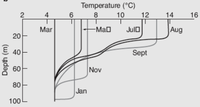
Photo from wikipedia
Electronic devices are exposed to a variety of climatic conditions worldwide. The day/night temperature fluctuations between the device interior and external conditions can lead to the formation of transient conditions… Click to show full abstract
Electronic devices are exposed to a variety of climatic conditions worldwide. The day/night temperature fluctuations between the device interior and external conditions can lead to the formation of transient conditions within the enclosure that enhances the possibility of water layer build-up on the surface of printed circuit board assembly (PCBA). This article deals with the parametric investigation of the effects assisting the formation of water film on PCBA surfaces under transient climatic conditions, which alters the functionality of electronic devices. The investigated parameters include the external humidity level, PCBA cleanliness, temperature difference between ambient and the PCBA, and the rate of temperature/humidity change. The effect of residues commonly associated with the soldering operations—weak organic acids—on the water film formation was investigated at 25 °C/80%RH under isothermal and nonisothermal conditions. For nonisothermal conditions, the PCBA temperature was reduced to the level slightly above and below the dew point. The impact of external climate on the wetting time of the contaminated PCBA was demonstrated by its exposure to day/night cyclic conditions, and the overall effect on corrosion reliability of the electronic circuit was assessed. A combination of AC impedance and DC leakage current techniques was employed to determine the electrochemical changes of the PCBA surface resulting from the build-up of a conductive water film. The results show that the presence of hygroscopic flux residues increases the water vapor content above the surface, leading to moisture condensation under potentially noncondensing conditions, and results in the corrosion reliability issues.
Journal Title: IEEE Transactions on Components, Packaging and Manufacturing Technology
Year Published: 2020
Link to full text (if available)
Share on Social Media: Sign Up to like & get
recommendations!